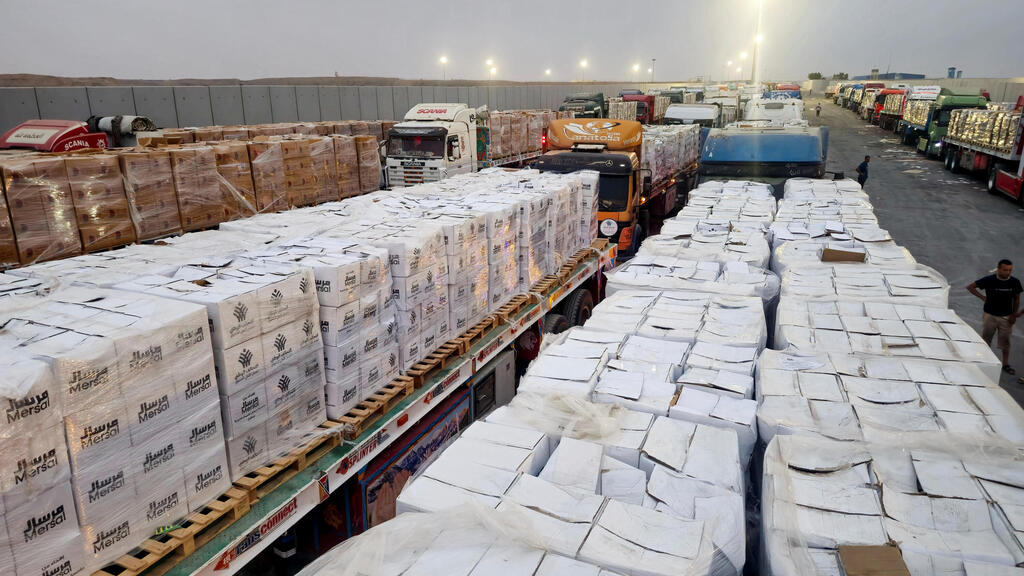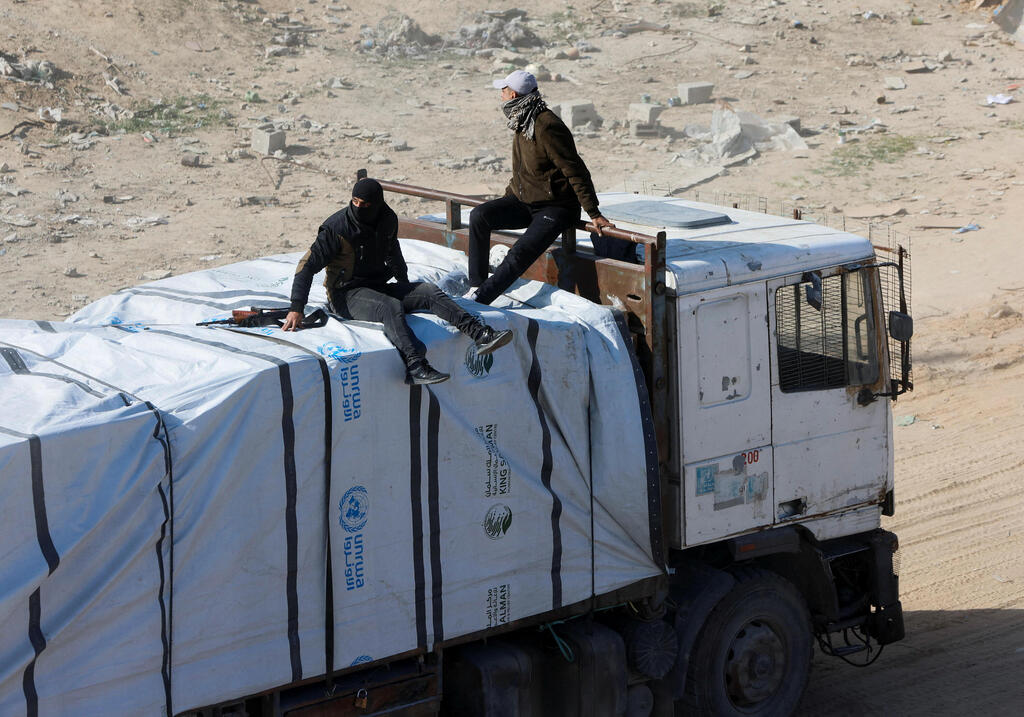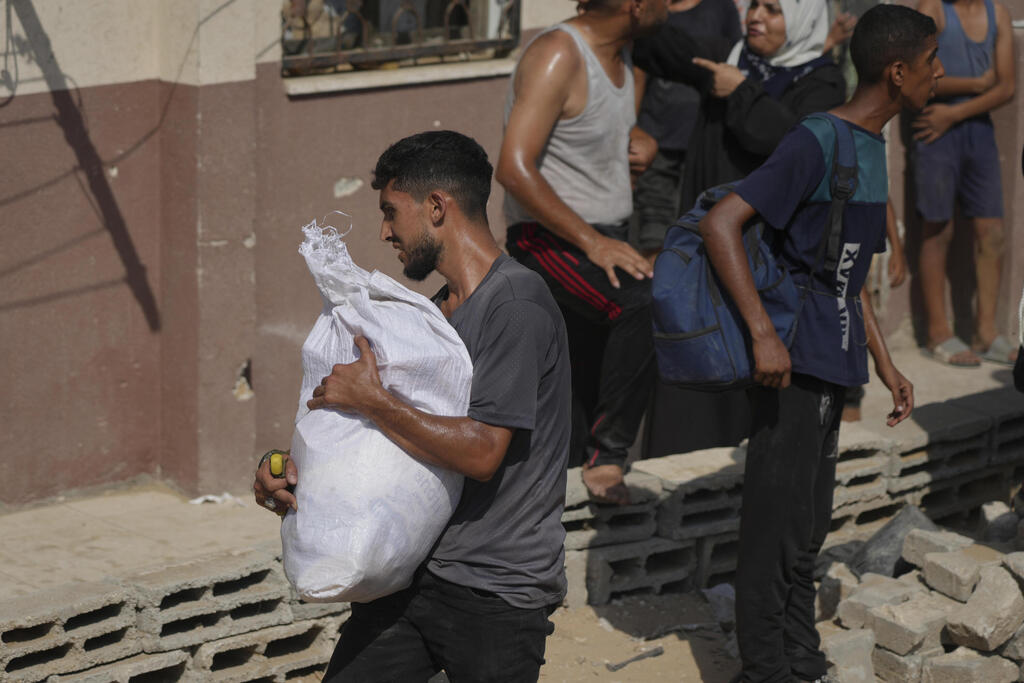Denmark is considering sanctions and its prime minister attacked Prime Minister Benjamin Netanyahu, calling him “a problem in himself.” Thousands wait for aid in Gaza and trucks continue to arrive.
Of the 104 organizations, 84 never submitted requests. Only 20 applied, three were denied, one was approved and the rest are still under review. In practice, dozens of other organizations operate in the Strip in coordination with Israel because they met the requirements. In other words, the joint statement is just another stage in the propaganda war. A storm over nothing. Many of these organizations are fringe groups that seize every opportunity to attack Israel.
Already, the amount of food entering the Strip far exceeds the threshold set by international standards. Israel’s requirements did not appear out of nowhere. Hamas operatives have been known to infiltrate UNRWA staff. But not only that. One of the organizations behind the statement is Doctors Without Borders (MSF). One employee, Fadi al-Wadiya, worked as a therapist—but he was also a member of Palestinian Islamic Jihad and active in the rocket network. Israel cannot approve activities by organizations that provide cover for terrorist operatives.
Why should Israel allow organizations that deny its very right to exist to operate? Want to help? Fine. But without Hamas operatives and without racist, antisemitic ideology even if it masquerades as humanitarian.
The World Central Kitchen (WCK), which is not a signatory to the statement, is one of the most active organizations in Hamas-controlled areas. It employs hundreds of workers. In April 2024, seven staff members were killed in a tragic incident. How did it happen? Terrorists posed as kitchen staff. The Israel Defense Forces investigated and called it an operational mishap. Cooperation with the organization resumed, but Israel later discovered 62 employees were Hamas members and required their dismissal.
This is why Israel demands transparency. Organizations whose requests were denied refuse to provide employee lists. What if they include Hamas members? Again: aid is welcome, but not for groups that shield terrorist operatives or promote hateful ideologies under a humanitarian guise.
The “starvation” campaign gained momentum with images of children, skin and bones on the front pages of leading newspapers worldwide. As it turned out, these children suffered from serious illnesses. Still, a few weeks ago, food prices in Gaza soared to alarming heights, indicating severe shortages. Not all U.N.-backed aid claims were false and each should be examined individually.
In recent days, prices have fallen: 1 kilogram of flour, which had risen to 500 shekels, dropped to 10–20 shekels. A liter of oil costs 25–35 shekels and a can of chickpeas 8–20 shekels.
Two agencies publish daily data on trucks entering Gaza, including food weight. The U.N.’s UN2720 Monitoring & Tracking Dashboard, established following Security Council Resolution 2720, tracks aid into Gaza. From May 19 to August 12, 46,335 tons of humanitarian aid entered in 3,551 trucks, 94% of which was food. Only 5,985 tons reached their intended destination in 412 trucks—just 11.6% of trucks and 13% of aid.
Where did the rest go? The U.N. said it was “intercepted,” meaning seized by armed groups or diverted by civilians, primarily Hamas. Research by Prof. Neta Barak-Koren and Dr. Jonathan Buxman shows that in many conflict zones, aid trucks serve as cash sources for warlords like Hamas. Their recommendation: change the system—but there is little chance that will happen.
The Coordinator of Government Activities in the Territories (COGAT) reports that from May 19 to August 12, 7,471 trucks delivered 139,001 tons of food and 2,115 tons of medical supplies. The difference with U.N. data exists because much aid bypasses U.N. tracking, sometimes privately, sometimes via Egypt, which prefers not to record its deliveries.
Even with aid entering Gaza, Israel says Hamas’s control and diversion of resources cause shortages. During these 85 days, each person in Gaza, estimated at two million, should have received about 0.8 kilograms of food per day, roughly 4,000 calories—well above the 2,100 calories per day recommended by international food organizations.
A study by eight researchers examining aid to Gaza over four months in 2024 found an average of 3,163 calories per person per day, exceeding international humanitarian standards. The study concluded that food entering Gaza surpassed minimum humanitarian requirements.
 Ben-Dror Yemini
Ben-Dror YeminiSo how is there hunger? As the U.N. acknowledged, shortages are caused by aid being stolen, primarily by Hamas. The population is under Hamas rule, not Israeli control. If Hamas wanted, food would reach everyone—but it does not, because Hamas wants to blame Israel. Western media and Israel’s Haaretz, leading the campaign, could have checked the data—but they did not. Instead, they amplified Hamas propaganda. That does not help Gaza residents; it only serves Hamas.







